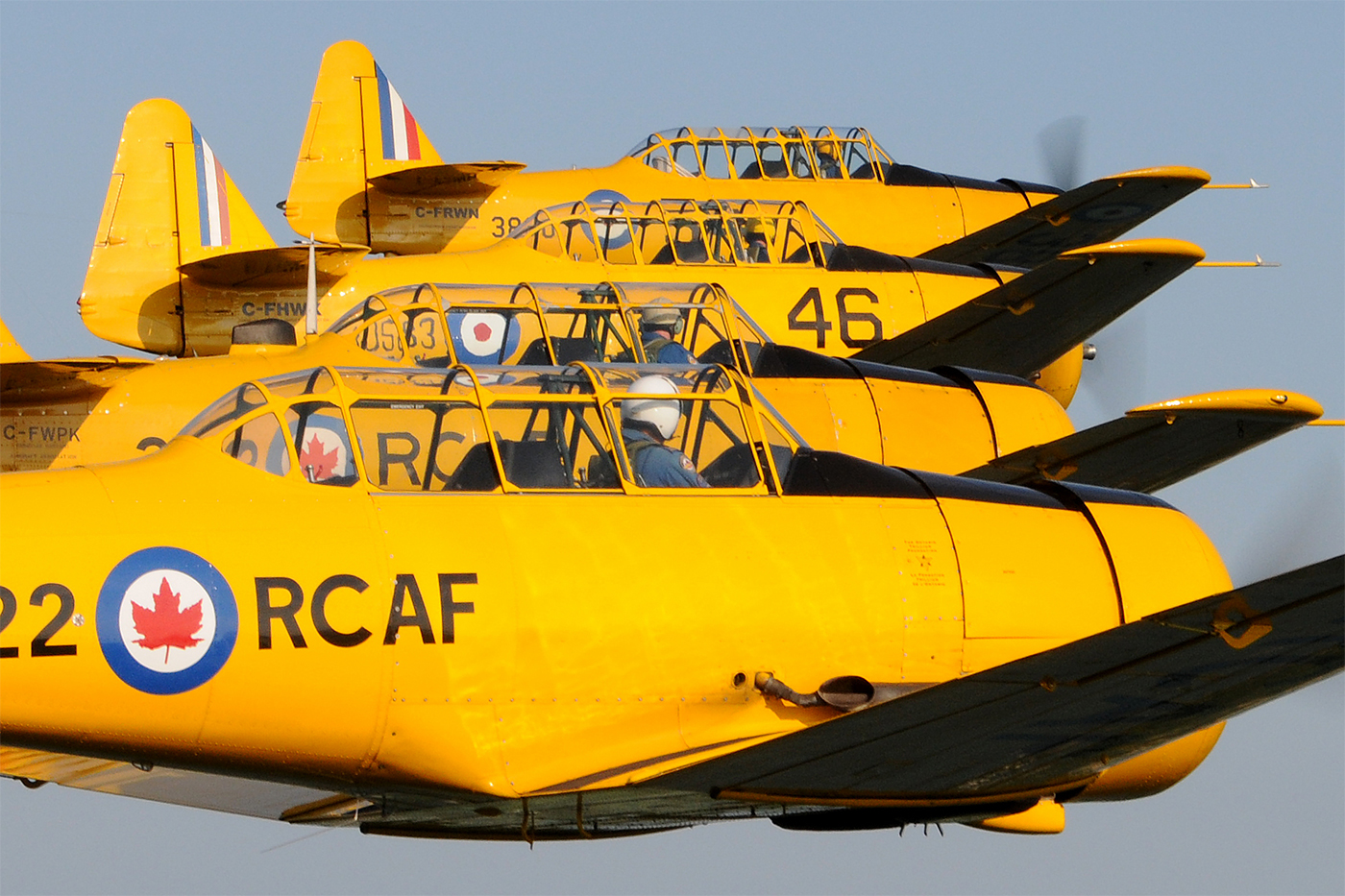Estimated reading time 8 minutes, 2 seconds.
From Aug. 6 to 8, airshow pilots and warbird jet owners from Ontario and Quebec descended on Waterloo Airport (CYKF) for three days of formation practice and training.
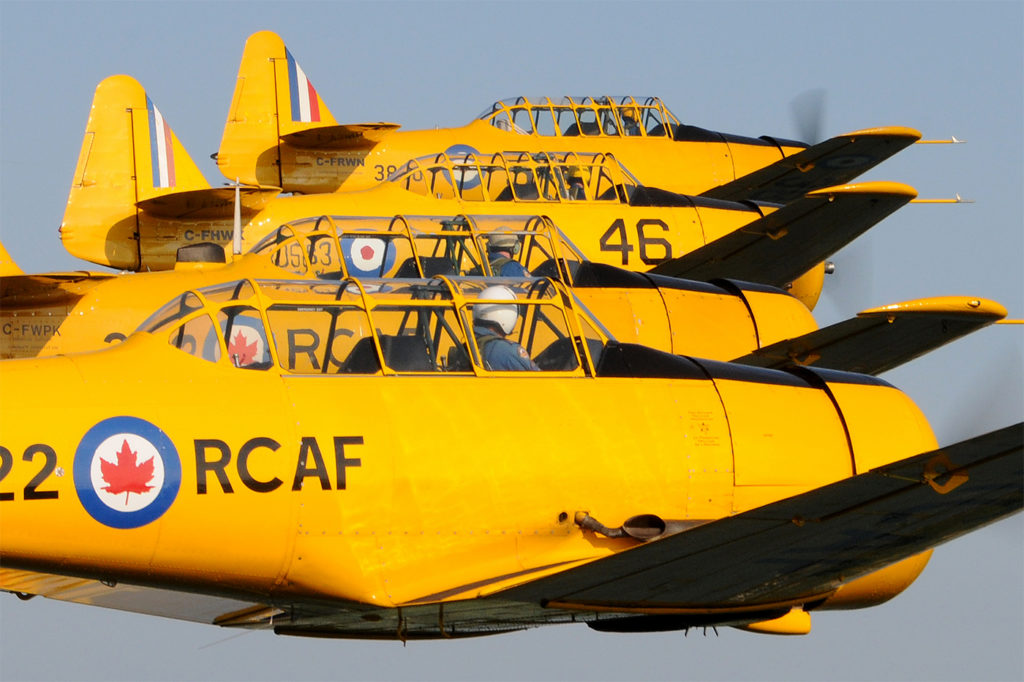
Organized by Derek Hammond, president and flight operations director for the local Waterloo Warbirds organization, the formation clinic brought vintage aircraft pilots and airshow performers together to brush up on formation skills, receive training for a “FAST” card or renew their FAST certification.
“FAST” is code for Formation and Safety Team, a program created in 1993 by five organizations — the Canadian Harvard Aircraft Association (CHAA), Canadian Warplane Heritage Museum, North American Trainer Association, Commemorative Air Force and T-34 Association — to promote safe formation flying at public events for civilian pilots.
Now, there are 18 signatory organizations around the world. At formation clinics, instructors and check pilots are in attendance, and — in a nutshell — when a trainee passes a check ride, a FAST card is issued. But not just any FAST card. There are four qualifications that can be earned. Wingman: fly formation on another aircraft; Leader: lead a formation of aircraft; Instructor: instruct trainees; and Check Pilot: evaluate and issue a FAST card. It’s worth noting that the FAST certification is required for formation flying at public displays in the United States. Formation flying at public events in Canada is subject to Canadian Aviation Regulations restrictions, but Transport Canada respects the FAST card.
Waterloo Warbirds had four of its signature aircraft at the August formation clinic — the North American Harvard IIB, Canadair T-33 “Mako Shark,” Mikoyan-Gurevich MiG-15 UTI and Aero L-29 Delfin. Local pilot Danny Richer attended with his rare BAC 167 Strikemaster. The CHAA brought three Harvard aircraft, complemented by two additional Harvards piloted by Dave Hewitt of the Canadian Harvard Aerobatic Team and Dr. Dave Martin, CHAA’s FAST check pilot. While restrictions were in place due to the COVID-19 crisis, all rules and recommendations were followed and did not hamper the ground briefings that were held in the Flite Line hangar.
The clinic saw two groups training on the jets and Harvards. Hewitt started the first day off with teaching the basics of formation flying and helping to identify the goals for the Harvard pilots. Then the jet pilots broke into two separate flight groups. Waterloo Warbirds chief pilot Ray Thwaites and safety pilot Richard Cooper were trainees on the T-33 and MiG 15. Their instructional pilots were Canadian astronaut Bjarni Tryggvason and Dan Fortin, president of Warbirds Canada and former team lead of the YakAttack Airshows aerobatic team. The second flight group consisted of trainee Hammond flying the L-29 Delfin, with Hewitt as his instructional pilot. Richer flew his Strikemaster as lead for Hammond and Hewitt.
Each sortie started with a thorough ground briefing with all crew in attendance. Expected weather for the time of the flight, radio frequencies, NOTAMs, emergency airfields and procedures were all discussed. Trainees were tested on a variety of different scenarios to help them avoid mistakes.

One such scenario saw the leader lose his radio, making him unable to communicate with the control tower or the other pilots in the flight. Looking at his No. 2 wingman, he tapped his headphones and waved his hand across his mic, communicating that he had lost his radio. Once acknowledged, he gave hand instructions for No. 2 to take the lead for the rest of the flight. As a leader or wingman, it’s important to know exactly what to do during emergency situations. Often a “walk-through” is done to help everyone know where they’re supposed to be during each manoeuvre.
Another scenario in the air with a two-ship formation saw the leader instruct the wingman to switch from echelon right to echelon left and trail positions, testing the trainee’s ability to move safely between positions.
Turns were made during each of the formations to test the trainees’ ability to hold position. As well, each No. 2 wingman was tasked with performing a rejoin after the leader broke away. In cases where there were two trainees on the flight, both took turns as the lead.
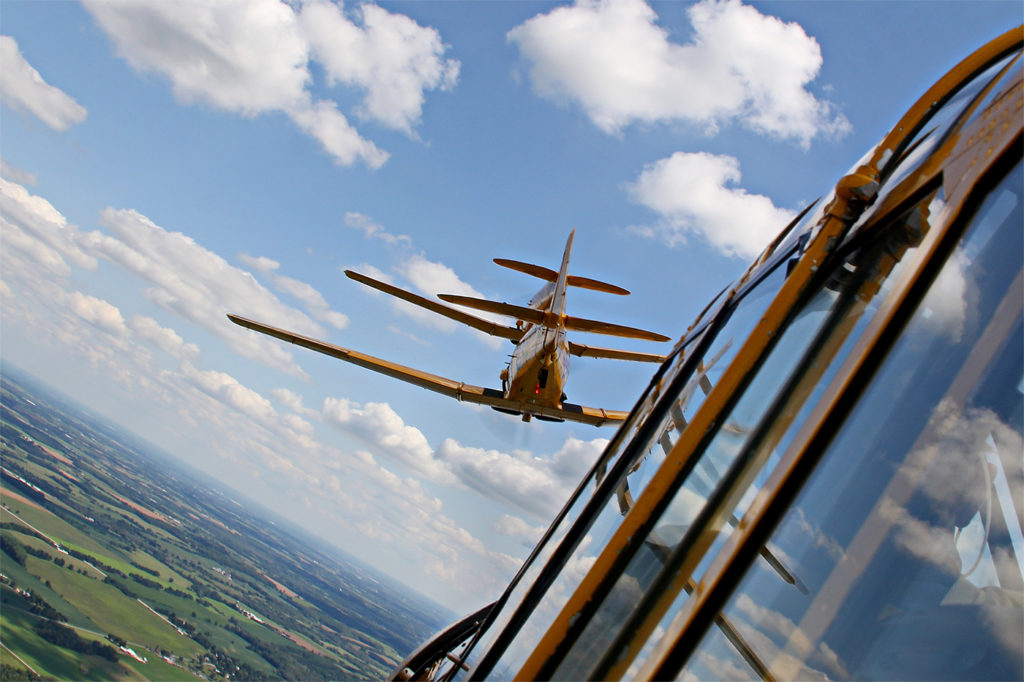
In a four-ship scenario, manoeuvring into different formations became more complicated as everyone was required to know exactly where they needed to be and how they had to move during a formation change. The break-and-rejoin became more complicated with a larger formation as the risk of collision was greater.
At the end of an exhilarating flight, the formations returned to the airport and performed an overhead break, which provided separation for landing. Once parked, “safetys” — otherwise known as quick discussions about safety issues that may have occurred during flight — were held at the aircraft. Then it was time for the group to return to the hangar for a thorough de-brief of the flight.
Day two kicked off with an update from FAST check pilot Martin on the latest FAST information, as well as an explanation on the formation evaluations and renewals.
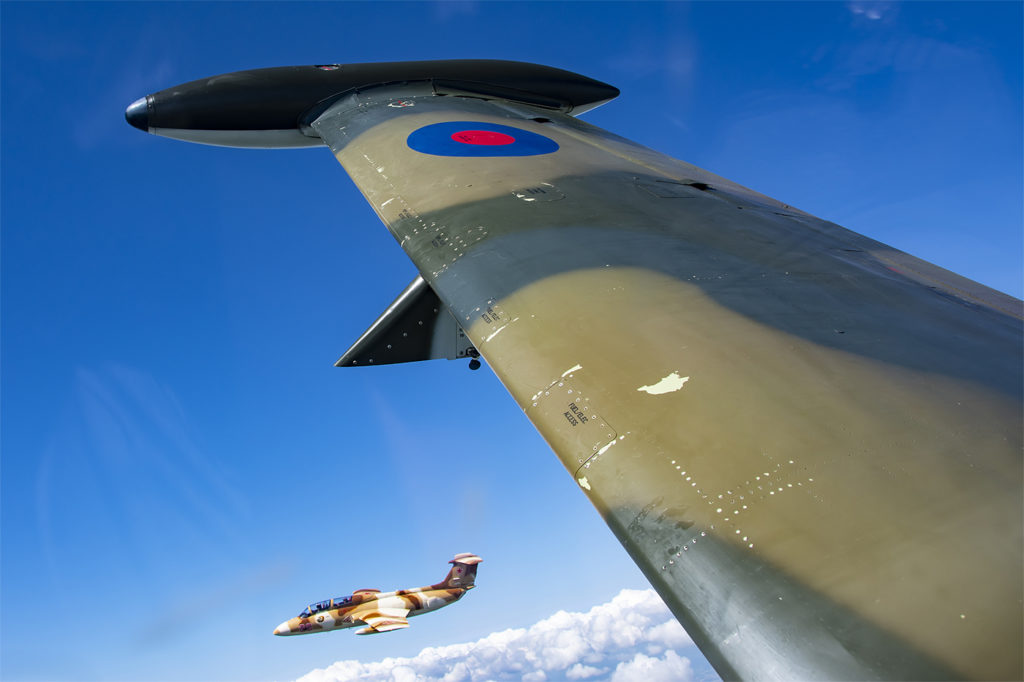
“As the FAST check pilot, I concentrated on renewing FAST patches for Harvard flying, as well as training for wingman cards,” said Martin, who has 7,500 flying hours and earned his wings in the South African Air Force in 1966. “Training camps like this are critical to ensure that safe formation flying standards are both taught and maintained. Canadian regulations do not specify these, which make the FAST principles so important as a basis for accident-free formation displays.
“When evaluating a FAST candidate, I look for an understanding of the FAST principles of thorough pre- and post-flight briefings; communication via hand signals and radio; smooth flying to maintain two planes of separation at all times; and safe, controlled formation changes,” he added.
By the end of day three, a handful of pilots with the CHAA were able to renew their formation cards to stay current.
The Harvard aircraft flew several four-ship formations over the duration of the clinic, allowing several pilots to achieve their goals.
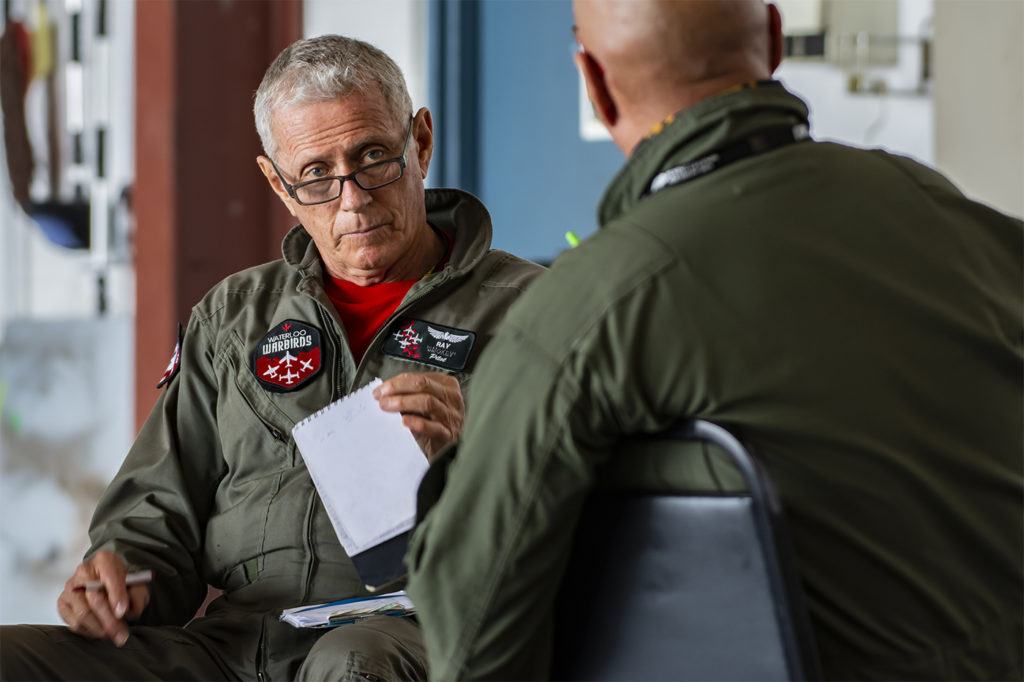
“It wasn’t my first time flying formation, but it was my first time receiving formal instruction and I couldn’t have asked for a better group of pilots to draw from,” said Liam Pearson, a Harvard pilot with the Waterloo Warbirds.
“I only did two flights over the three days; the first flight was a three-ship, and the second a four-ship,” he added. “I had to pinch myself and try to remember what year (or century) it was. All egos were left at the door, which created a safe and welcoming environment to learn. Everyone I spoke with [on the last day] had accomplished something over the previous 48 hours regardless of their experience level coming into the clinic on day one.”
Reflecting on three unforgettable days spent at Waterloo Airport with pilots from around Canada, Martin said, “The [training] camp was an excellent effort on the part of Derek Hammond of Waterloo Warbirds to build relationships between different formation flying groups in Canada. This was an informal gathering where we attended a common briefing, but flew separately at the same venue, as a first step towards organizing formal training clinics in the future. In this regard, it was very successful in that we got to know each other and learned how different groups operate.
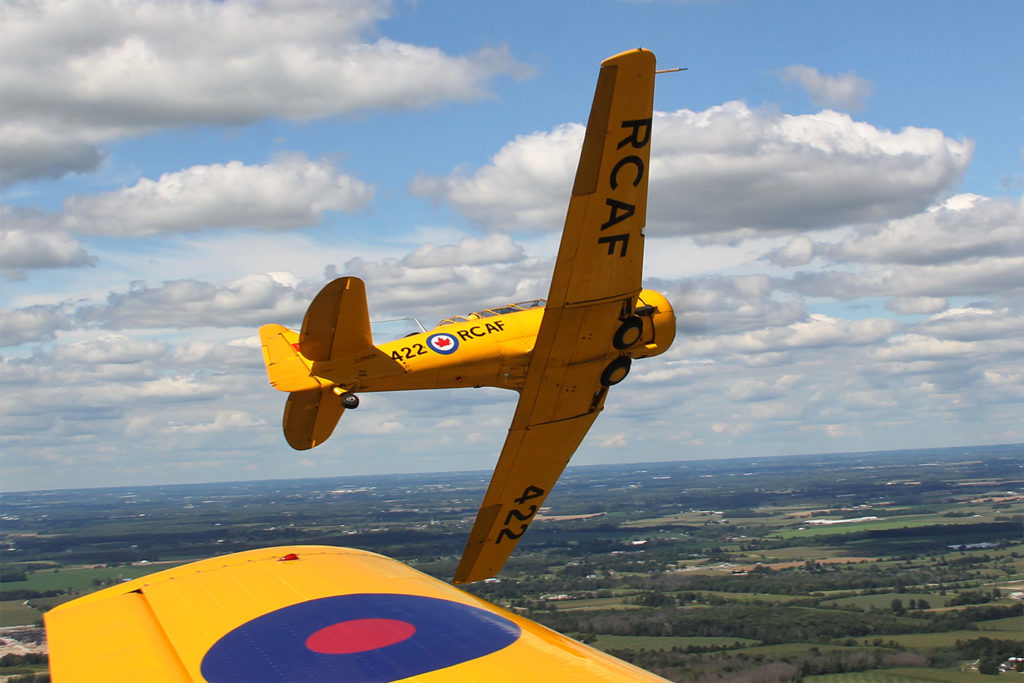
“Co-operation and mutual support make us all stronger and safer,” added Martin. “This, in my opinion, was the real value of the [Waterloo training] camp — namely breaking down barriers and encouraging common aviation values.”
A special mention goes out to the Nav Canada staff at Waterloo Airport. The extra activity with fast-moving jets and large Harvard formations made for a complicated few days when mixed in with the local flying school, civilian pilots and airliners.
All in all, the formation clinic was a roaring success.
